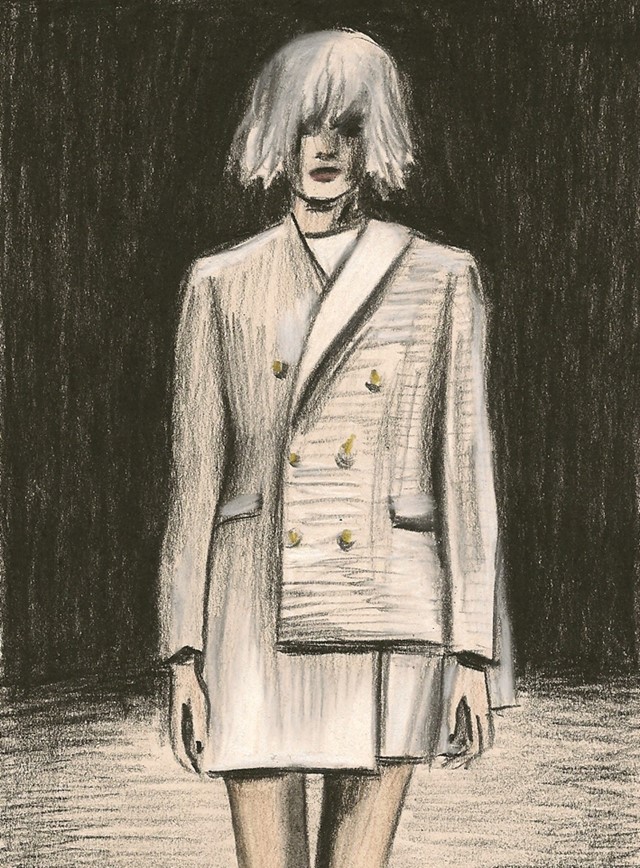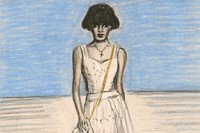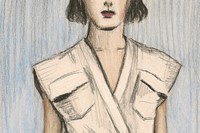When fashion turns to white, you know it has purity on its mind. But that doesn't always mean the romanticised and demure virginal implications of the shade – a sartorial white-out is a nice metaphor for fashion's localised absolutism about just
When fashion turns to white, you know it has purity on its mind. But that doesn't always mean the romanticised and demure virginal implications of the shade – a sartorial white-out is a nice metaphor for fashion's localised absolutism about just about anything, be it shape, texture, aesthetic or theme. And it's the perfect choice for the spring/summer collections, because it sits nicely atop a suntan.
The yéyé designers of the 60s liked white for its functionalism – it brought a harsh coolness that spoke of futuristic pragmatism and gave instant and clinical space-age appeal. The likes of Pierre Cardin and André Courreges created architectural and sculpted pieces in white, Cardin even redesigning the traditional nurse's uniform to give her leggings, a tunic and a gyratory halo-helmet, all blindingly monotonal. Without going quite as far as hospital brights, Alexander Wang's almost-all-white collection for S/S11 had a similar rigidity and uniform feel to it, with his signature deconstructed tailoring merging with something akin to Samurai influences to converge on a sort of streetwise karate kit, with flat-cut waistcoats tied with obi belts, worn over bagged-out and cropped britches.
Rei Kawakubo also used white to explore a certain purity of aspect this season – at Comme des Garcons, traditional tailoring was – literally – turned on its head and worn upside down and back to front. Kawakubo worked in both black and white, but her lighter looks showed more plainly the complexities and inquisitive nature of her designing mind this season. Jackets were asymmetrically cropped, mismatched and fanned out at the back, some even featured a conjoined twin that emerged from between models' shoulder blades, or a Siamese sleeve that sprang from an integral seam. When a garment is white, there becomes room for such power struggles of structure, because nothing ephemeral, such as print or embellishment, detracts from the actual physicality of a garment. White becomes a political statement in fashion, the blankest canvas for making your point. Rifat Ozbek's White collection of 1990 featured as-yet-unseen clubwear based around traditional sportswear-style hooded tops, crop-tops and drawstring trousers, all emblazoned with words that conveyed spirituality and environmental harmony. He was perfectly in tune with the ideology of that turn of decade.
The spiritual and the physical weren't far from Dolce & Gabbana's minds for S/S11 either, with their signature lingerie detailing and corsetry this time rendered all in – you guessed it – white. From frilled skater skirts to full length broderie dresses, they explored the connotations of femininity that white can bring with it, from the virginal to the veterinarian. Hussein Chalayan also referenced sparse femininity with his softened masculine tailoring, from mannish shirt dresses to kimono-esqe blouses edged and bound with lace and broderie anglaise.
Of course, all this purity is a far cry from what is known as purism – that's a very different idea, which involves different palettes of neutrals and a certain austerity of cut. White can be frilled up, frothed over and frou-frou, or it can be ice-cool, unalloyed and severe. It can be modern or nostalgic, hard or soft. So it's a great bet for spring/summer, because it's an all-round box-ticker and trend-setter, ideal for making whatever sort of fashion statement you choose.
Text by Harriet Walker
Zoë Taylor has appeared in Le Gun, Bare Bones, Ambit and Dazed & Confused. She is currently working on her third graphic novella and an exhibition.


